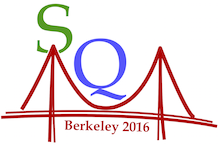Conveners
Strangeness in Astrophysics
- Grazyna Odyniec
Andreas Zacchi
(Goethe university, Frankfurt - Germany)
30/06/2016, 09:00
Contributed Talk
One of the most challenging problems of theoretical physics concerns the structure of the QCD phase diagram and
a possible critical endpoint. Experimental programs with heavy-ion collisions at ultrarelativistic energies and lattice QCD at finite temperature are performed such as to identify position and character of the transition from a hadronic gas to a quark-gluon plasma. Both, HIC...
Gergely Barnafoldi
(Hungarian Academy of Sciences (HU))
30/06/2016, 09:20
Contributed Talk
In this talk we propose a method, based on harmonic base polynomial expansion, to study the Functional Renormalization Group (FRG) method at finite chemical potential [1]. Within this theoretical framework we determine the phase diagram of simple Yukawa-type model. As it turns out, the bosonic fluctuations decrease the strength of the transition as compared to the analysis containing only the...
Vladimir Skokov
(Brookhaven national laboratory)
30/06/2016, 09:40
Contributed Talk
In this talk we discuss possibilities of studying the onset of
Bose-Einstein condensation in strangeness and isospin sector of QCD.
At finite temperature, the condensation of kaons (pions) may occur if
the strangeness (isospin) chemical potential is large enough and the
temperature is sufficiently small for the relevant mesonic degrees
of freedom to be present. Direct lattice QCD study...
Jacquelyn Noronha-Hostler
(University of Houston)
30/06/2016, 10:00
Contributed Talk
The precision reached by recent lattice QCD results allows for the first time to investigate whether the measured hadronic spectrum is missing some additional strange states, which are predicted by the Quark Model [1,2] but have not yet been detected. This can be done by comparing some sensitive thermodynamic observables from lattice QCD to the predictions of the Hadron Resonance Gas model...
